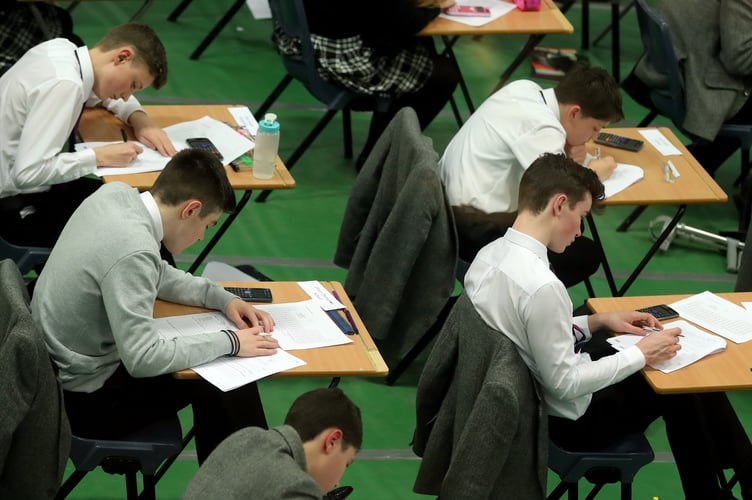The average A-level result in North Somerset was worse than the average across England last year, new figures show.
The Association of School and College Leaders said the results come as "schools and colleges continue to battle against funding and staff shortages", and after students had their early school experiences disrupted by the pandemic.
New figures from the Department for Education show the average point score for North Somerset A-level students in the last academic year was 32.6, slightly higher than the 32.1 the year before.
This was lower than the average score of 35.9 across England, and lower than the South West average of 34.3.
The national average increased slightly from 35.6 in 2023-24.
The average grade in North Somerset was a C+, in line with a year earlier, while across England, the average grade remained at B-.
London was the region with the highest score in England, at 36, while the East Midlands had the lowest, with 33.3.
In North Somerset, 83.3% of eligible students achieved at least two A-levels.
Pepe Di’Iasio, general secretary of the Association of School and College Leaders, said the slight improvement in results "follows years of incredibly hard work from students and teachers".
"This cohort suffered disruption to their earlier education due to the pandemic, while schools and colleges continue to battle against funding and staff shortages. Everyone should be proud of their efforts," he added.
"However, it remains the case that results differ widely across regions, which is connected to the large attainment gap between disadvantaged pupils and their peers.
"More has got to be done at a governmental level to tackle the socioeconomic factors behind these longstanding trends and give all pupils, regardless of where they live, the best possible chance to succeed."
Across England, female students slightly outperformed males, while students with special educational needs scored less than those without.
On average, those eligible for free school meals scored more than five percentage points lower than those not eligible, and white students outperformed their black and Asian counterparts.
Paul Whiteman, general secretary at school leaders' union NAHT, said: "The current exam specifications were updated shortly before the pandemic, massively disrupting their 'bedding in', but teachers have now had time to understand the requirements, mark schemes and the preparation students need.
"While the attainment gap between disadvantaged students and their peers has narrowed slightly, it remains a concern and disparities in A-level results between different regions need closer investigation.
"They may reflect differences in the impact of Covid and the cost-of-living crisis or reflect specific areas of poverty and varying investment into infrastructure and to support services including health and social care.
"In particular, the gap in top A-level grades between London and the North East has grown over the past decade, and the reasons need to be properly understood if they are to be tackled."
A Department for Education spokesperson said: "Tackling the baked-in inequalities in our education system will take time but, through our Plan for Change, this Government is taking action against the root causes that we know are holding young people back.
"We are driving high and rising standards for every child through reforms to the national curriculum and assessment and new RISE teams and strengthened school accountability.
"This comes alongside work to tackle disadvantage including free breakfast clubs in every primary school, our expansion of free school meals, and earlier intervention for children with additional needs, creating a school system that supports every child to achieve and thrive.
"Our landmark Children’s Wellbeing and Schools Bill and forthcoming Schools White Paper will put children at the centre of the education and social care systems, breaking the link between their background and what they can go on to achieve."




